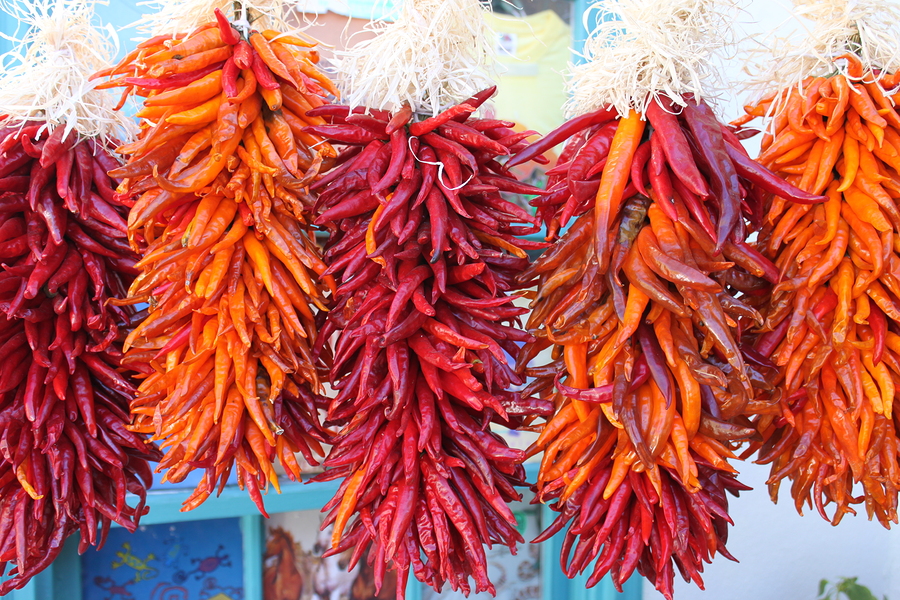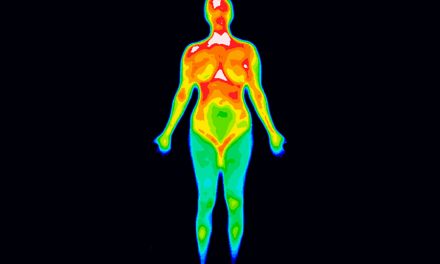American food culture hasn’t always been about spice. Most of us don’t grow up eating it or have the stomach for it; you know, sweaty foreheads, runny noses…and the next day is even worse. However, for many cultures eating hot peppers is normal AND has many health benefits.
But before we dive into that, let’s deal with the issue of them being called “hot peppers”. Apparently it was Columbus who first called them that, because he assumed the chili plant was related to the hottest herb he knew- the peppercorn. This would explain why most people call these plants chilies or capsicum, which is their botanical name.
From the article:
“Chilies (or as the Aztecs called them, “xillis”) originate from warm regions of the Americas. Chilies have been eaten there since at least 7,000 B.C. and remain a fundamental part of Mexican, Central American, and South American diets. Chilies are actually part of the nightshade family of plants, but unlike other New World nightshades, such as tomatoes and potatoes, peppers were embraced in some European regions right away because they offered a cheaper and hotter alternative to the pricey peppercorn.”
Thankfully chilies soon spread across the globe, can you imagine Thai food without them? But, while these cultures enjoyed the flavor they brought, they also knew they were good for their health. Cornell University biologists reported in 1998 that these little marvels could also kill food-born bacteria and fungi. Before we had refrigerators, food would spoil and people would become ill. Adding chilis kept the food safe from things like listeria and salmonella. And research (some new and some we’ve known about) is showing that capsaicin, the compound that makes chilis hot (an odorless, oily alkaloid found primarily in the membrane that holds the pepper seeds inside the fruit), may also combat cancer cells; we’ve known it kills prostate cancer cells for about a decade, but recently researchers found that the capsaicin molecule binds to the surface of cancer cells and affects the membrane that surrounds and protects it.
The research is ongoing and promising, which is good because while you could just eat three to eight habanero peppers three times a week, there are some who couldn’t stomach that.
Beyond protecting food from pathogens, and the potential help in the fight against cancer, capsaicin has still other positive effects on the body: its used to treat chronic pain, like arthritis, cluster headaches, triggers the production of endorphins (happy, pain-relieving hormones that come from the pituitary gland in response to pain), as a stimulant for the digestive system, boost the power of other herbs, and help the cardiovascular system.
More from the article:
“According to the late 20th century herbalist Dr. John Christopher, cayenne is “one of the greatest herbs of all time.” His personal daily regimen included a spoonful of cayenne pepper powder stirred into a glass of water. Dr. Christopher believed that cayenne was one of the best remedies for the cardiovascular system and claimed that a strong cup of cayenne tea could even save a person from a heart attack. A 2013 animal study from the journal “Circulation“ found that capsaicin ointment rubbed on the skin during a heart attack resulted in an 85 percent reduction in cardiac cell death. The results prompted researchers to recommend the ointment to reduce ‘the extent and consequences of heart attack.'”
We aren’t done though! Got a cold? Hot peppers relieve cold and flu symptoms as well; capsaicin thins phlegm, loosens congestion in the lungs, and can lower a fever by helping to break a sweat. Chilis also help, “dilate arteries, regulate blood pressure, improve heart performance, and prevent clots. Sprinkled into a wound, cayenne powder can also stop bleeding usually in under a minute and is typically painless”, reports Epoch Times.
Still worried because they are so hot and you imagine they are killing your insides? Well don’t, peppers don’t harm the lining of your gut (although, if you have an irritated digestive system or IBS, too many chilis could make it worse). Just listen to your tongue, it will tell you when you’ve had enough. For me, it’s when my head and the back of my tongue starts to itch. But right before that, it’s a good burn. And if it becomes too much, don’t reach for watch, grab a starch (like potatoes or rice- even milk products help), that will kill that burn.
Enjoy! Spice up that food and aid your health my health nuts!
XO- Erin
Source: Epoch Times, Science Daily and UPI












